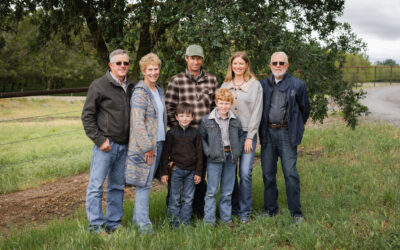
Getting what you pay for
How to evaluate EPDs across different breeds
by Miranda Reiman
Imagine buying a bull with a birth weight EPD (expected progeny difference) of 1.0, only to bring him home and find out he was actually a +9.6.
What if that mistake was your fault?
“If you’re looking at two bulls from different breeds and you’re not using across-breed EPD adjustment factors, you’re getting a very distorted picture of the differences in their predicted performance,” says geneticist Dan Moser, director of performance programs for the American Angus Association.
Annually the Meat Animal Research Center (MARC) in Clay Center, Neb., calculates those adjustment factors.
The published list includes 18 breeds and seven traits: birth weight, weaning weight, yearling weight, milk, marbling score, ribeye area and fat thickness. These values are adjusted back to an Angus base so breeds can be directly compared to one another.
In the opening example, a Charolais bull that is a +1.0 for birth weight may sound like a “heifer bull,” until adding the adjustment factor of +8.6, Moser says. That would predict the sire’s calves to be the same weight as an Angus bull with a +9.6 birth weight EPD.
“It really puts into perspective the breed differences,” he says.
For some traits, like marbling, it’s more of a subtraction problem, as the adjustments to an Angus base are all negative. Take a purebred Limousin bull that has 0.48 marbling EPD. Applying the across breed adjustment factor of -0.60 to get it to an Angus base would result in a -0.12 marbling EPD.

“If you’re dropping a full unit, it could be the difference in going from a bull that would produce calves that just made Certified Angus Beef ® down to one that barely makes Choice,” Moser says. “That’s significant when you look at the premiums available today.”
It may seem like a lot of calculating, especially when comparing two breeds that aren’t Angus, since they’ll both need to be adjusted to that base.
But Extension geneticist Megan Rolf, of Oklahoma State University, says it doesn’t have to be. Many universities offer free Excel-based or web-based tools where the math is as simple as punching in the numbers.
Breed-loyal producers will get the most benefit from within-breed percentile rankings, she adds. Plus, they have access to a specific association’s suite of EPDs and tools that may not have across-breed adjustment factors available, such as heifer pregnancy or the Angus $Value indexes.
“For somebody that’s setting up a mating system, or considering making a breed change, across-breed adjustment factors can really help them identify animals of different breeds which should have similar progeny performance and that might fit their objectives the best,” Rolf says.
That’s why it’s important to have stated goals in the first place that take into account things like environment and final marketing.
“Step number one: you need to figure out what you have, what you want and how you’re going to get to what you want from what you have,” she says. “That breeding objective should encompass a list of traits that are important to your production system.”
For more information, the scientists suggest checking breed association websites, www.eBEEF.org or the National Beef Cattle Evaluation Consortium (NBCEC) sire selection manual available at www.nbcec.org.
You may also like
Legacy in the Golden Land
On a quiet stretch of Northern California rangeland, a different story unfolds. The Borror family’s legacy modestly speaks through the cattle they raise, the ground they steward. The generations who’ve made a life here demonstrate commitment to doing things right, even when no one is watching.
Marbling, Feet and Fertility: Are they related?
The Angus breed has enough genetic diversity to allow breeders, and their commercial bull customers, to make progress across multiple traits simultaneously. One bloodline may be high in marbling but does not check the boxes you need for other traits. That does not mean marbling is the cause—it simply means your search for the ideal genetic pairing is not done.
Working for Premiums
The commercial Angus rancher from Collyer, Kansas, came back for daily homework in 1999 after a year at college. For 25 years now, he’s studied all the ways to grow his family’s W6 Cattle cow-calf herd with Angus at the base. Guided by data, Walt worked to improve the herd from zero Primes to averaging 60 percent. Learning what drives premiums prompted improvement.



